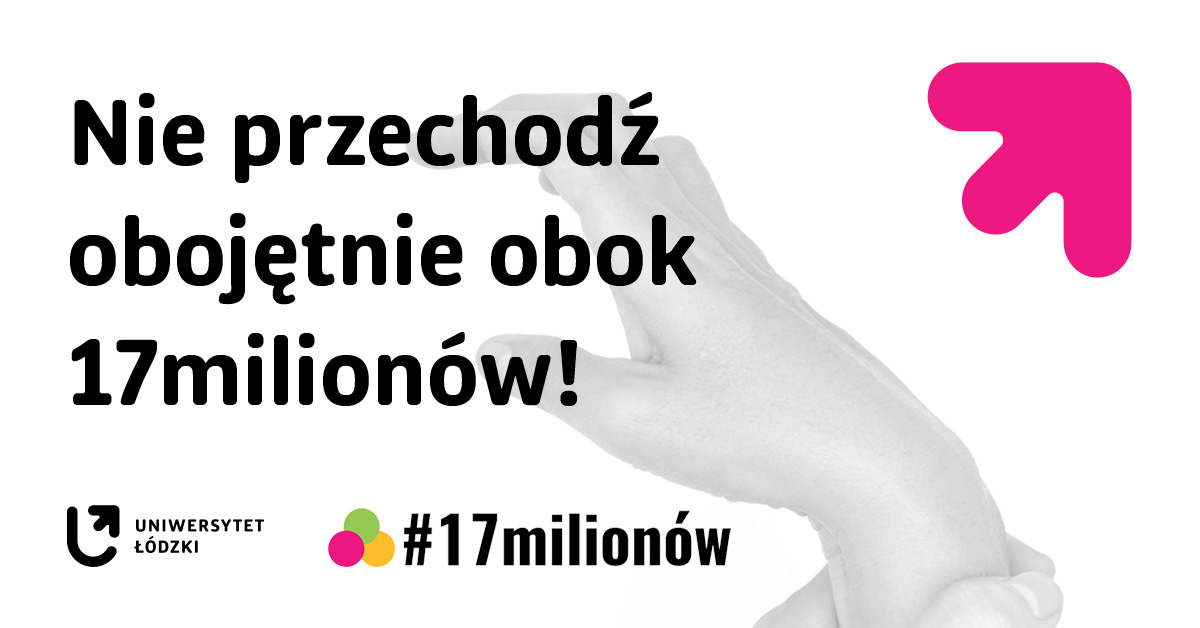
- There are more than 17 million people across the world living with cerebral palsy. It affects about 2 in 1,000 babies born.
- In Poland, approximately 20-25 thousand children suffer from the disorder. This is more than half of the total number of children with physical disabilities.
- Each of us will come into contact with a person with a disability resulting from CP at least once in our lives.
Cerebral Palsy – what is it?
Cerebral palsy is a large and a very diverse group of diseases. The disorder is classified as a chronic disease that lasts throughout life. The common feature of all forms of cerebral palsy is that it results from damage to brain tissue during its early development. This damage is non-progressive and results in abnormalities in posture and movement.
These disorders manifest themselves in different ways and with varying intensity. For some people this will mean an unsteady gait, while for others it will mean difficulty with precise gripping and use of hands. There is also a group of people who are unable to move independently and need special equipment to replace independent walking. Therefore, the group of people with this diagnosis includes both those who are completely independent and those who require constant support or even care from others. Importantly, everyday life depends on the degree of independence, but most often it does not exclude the possibility of education and taking up professional employment.
In order to better understand what people with CP are dealing with we asked Dr Krystyna Pomorska, for her opinion. Dr Krystyna Pomorska is a specialist in the development of social-emotional and communication skills in individuals with typical and impaired development, and she has been involved in therapeutic work with children, adolescents and their caregivers since 2007..
What does a day look like for a person with Cerebral Palsy?
Let's try to imagine the following situation: for one day we are unable to speak or make precise, purposeful movements. We see, hear and understand, but we cannot say or do what we would like to. In such a situation, we would need the help of other people to function, and the level of satisfaction of our needs would depend on their ability to guess what we want at a given moment.
These are the realities of many people with CP who, due to damage to brain structures, are unable to perform activities that healthy people consider typical. There are many problems related to CP that need to be publicised and solved. However, one area that seems particularly important is communication.
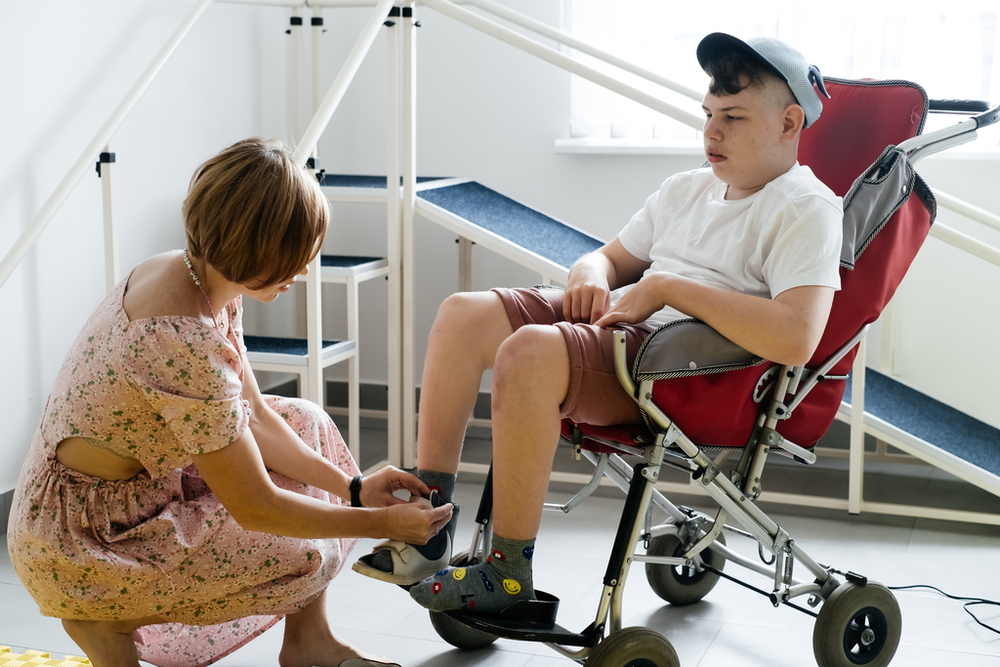
Communication as a right, not a privilege
We know about communication being a right and not a privilege in theory, but practice shows that there is still a lot to be done in this regard.
In my work, I often encounter situations where difficulties in communication lead to a number of negative consequences, such as the escalation of difficult behaviours (when they are the only way of expressing needs) or the development of depression and other mental problems.
Difficult behaviours, that is, behaviours that cause difficulty both to the person and to those around them, can take many forms. They may cause discomfort, pain, pose a threat to health or life, and be inappropriate in a given social context (which makes daily functioning difficult and leads to stigmatisation). Examples of such behaviours include hitting, biting, screaming, crying, bedwetting, or withdrawal from contact (apathy and unresponsiveness)..
We should remember that a person who does not speak may try to communicate through their behaviour. Unfortunately, those around you may perceive such behaviours as problematic, which creates a vicious circle of misunderstandings. Rather than trying to eliminate such behaviour, it is important to give the person the opportunity to express themselves through alternative forms of communication – this is a more ethical and effective approach.
This problem was wonderfully shown in the film entitled "Chce się żyć” [Life Feels Good], which shows the world through the eyes of the main character, who is considered intellectually disabled due to his motor limitations and lack of speech. I strongly encourage you to watch it.
The #17million campaign is a great opportunity to increase our awareness of augmentative and alternative communication tools. More and more specialists, especially speech therapists and special education teachers, are paying more and more attention to the problem of not speaking. This is related, among other things, to the consequences of the lack of appropriate interventions when speech, for various reasons, cannot be used at all or is used but to an insufficient degree for effective communication. You only have to imagine how frustrating it can be to be unable to communicate with those around you to understand the importance of activities that help people who are excluded from society because of speech difficulties or unclear speech.
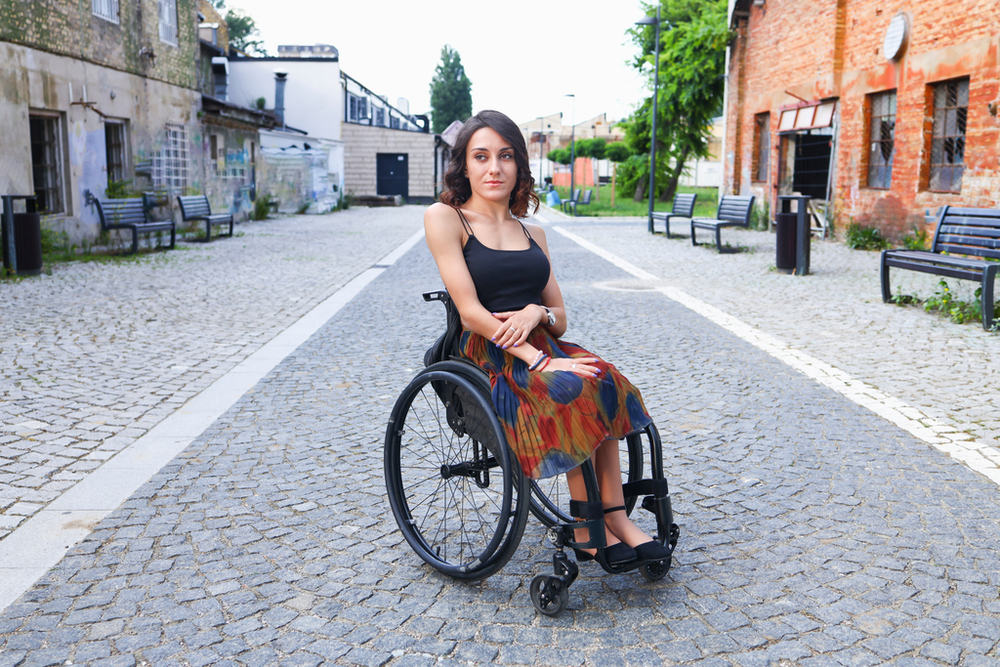
Augmentative and Alternative Communication (AAC) – Life-Changing Tools
There are many ways to support speech and many alternative means of communication. These include communication books in a paper form (the person communicates using pictures, photos or by pointing to letters), communication tablets or other devices with specialist software that makes it possible, for example, to scan eye movements.
It is important for everyone who comes into contact with a person who cannot speak to be able to communicate with them. Although awareness of AAC (augmentative and alternative communication) is growing, many people, including professionals (e.g. in the field of medicine, psychology) have never seen alternative communication tools or even heard of AAC.
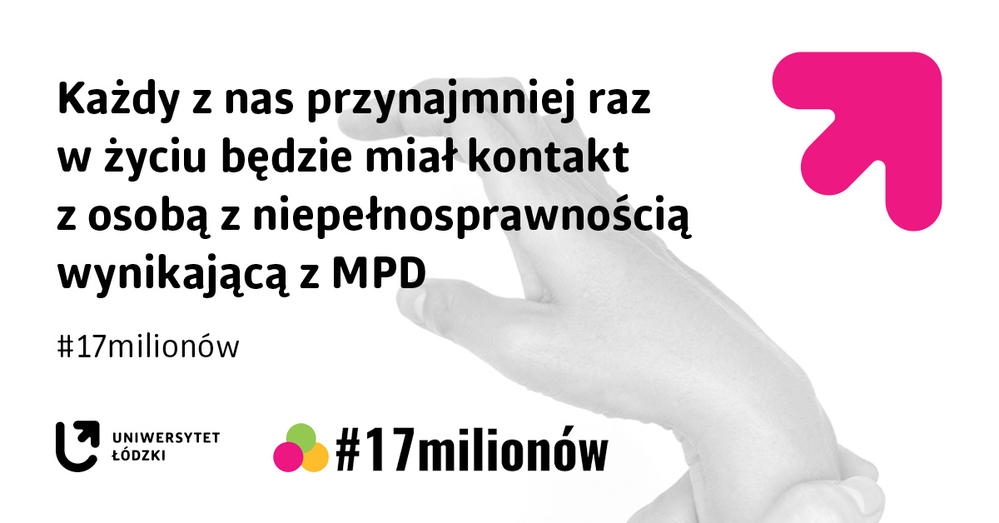
Education and Social Change
Specific actions are needed aimed at improving the situation of people with cerebral palsy in terms of realising their right to communicate – from educating the communities in which these people live and reside, through training specialists, to introducing technologies supporting communication in the public space. Here are some practical actions that can make a real difference in improving communication for people with CP (and not only):
- Organising awareness campaigns such as #17millions is a step in the right direction to make the public aware of what CP is and the challenges associated with limited communication. Films, commercials and social media campaigns can effectively reach a very wide audience.
- Incorporating the topic of AAC and complex communication needs into school and college curricula should become a common practice. It is important that information about CP and AAC tools appears in educational programmes for students, teachers, as well as students of pedagogy, speech therapy, psychology and medicine. Only then will future professionals be ready to work with non-speaking people (or people with other communication difficulties).
- Taking action to increase the number of AAC specialists trained to work with non-speaking individuals. People with CP often experience difficulties and may need, for example, professional psychological support. Unfortunately, the number of specialists (e.g. psychotherapists) using AAC is still insufficient. Doctors, psychologists, speech therapists, educators and other specialists should regularly participate in AAC training. This will enable them to better understand the needs of people with CP and provide effective help when it is needed.
Increasing awareness of AAC and improving the situation of people with CP require coordinated actions at many levels. However, let us remember that each of us has an influence on the attitude and actions of at least one person – ourselves. Promoting attitudes based on patience, empathy and the willingness to be understood by those around you significantly affects the quality of life of people who cannot speak or communicate in alternative ways. The example of modelling such attitudes on a daily basis works best. Small gestures such as:
- addressing a person who does not speak, assuming that they understand us,
- asking the person themselves (or someone accompanying them) about communication tools and the possibility of communicating and waiting for an answer,
are enough.
Finally, I leave you with a quote from Johnattan Croll, which captures the situation of many non-speakers well: "Just because I'm quiet doesn't mean I have nothing to say."
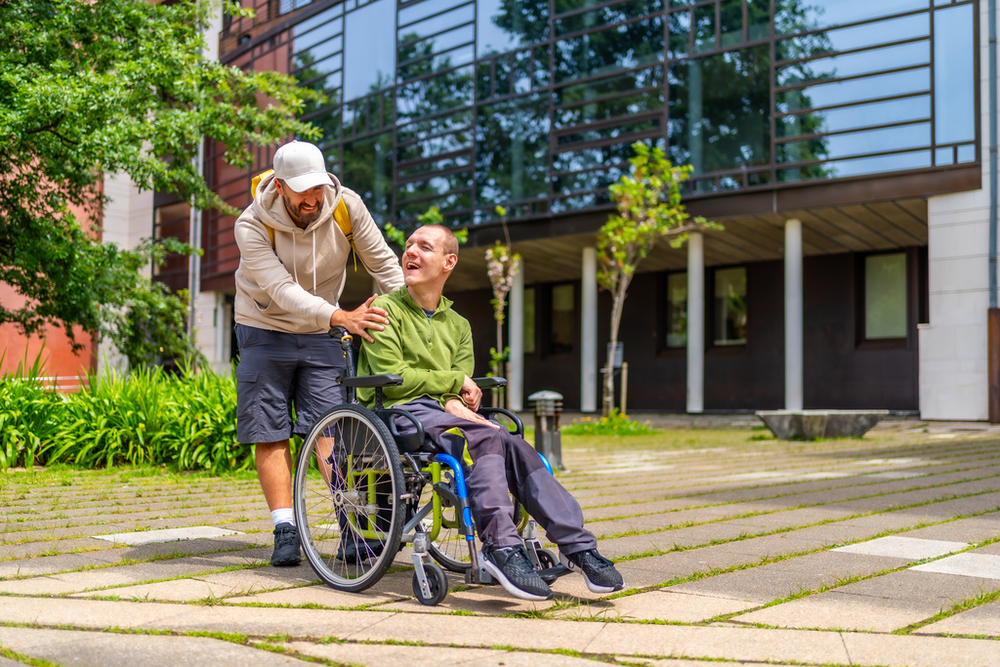
Those suffering from CP can study at the University of Lodz!
People with cerebral palsy have been successfully studying at the University of Lodz for years. The unit established to support people with special needs, i.e. those with disabilities, chronic diseases and other permanent or temporary health situations is the Academic Support Centre. The nature and type of support depend on the individual needs and capabilities of a specific student and concern primarily teaching activities (but also academic life in general). Below we present examples of reasonable accommodations relating to teaching and functioning at the university. This is not a closed catalogue, but only selected proposals:
- Recommendations for academic teachers regarding academic teaching (e.g. alternative forms of assessment and examinations, adapting methods and forms of work, taking into account the pace of work, etc.).
- Support from a teaching assistant (e.g. assistance in overcoming architectural, information and communication barriers, taking notes, support in dealing with administrative (organisational and formal) issues).
- Using specialised equipment for hire (including ergonomic instrumentation, laptops, tablets, magnifiers, etc.).
Support from an IT and technical specialist in selecting appropriate specialist equipment available for rental. - Adapting teaching materials (including examination sheets) to individual needs and possibilities (e.g. electronic form, enlarged font, line spacing, etc.).
- Using mobile devices and specialist equipment facilitating participation in the study process for people with special needs.
- Conducting online classes in real time.
- Foreign language classes tailored to individual needs and possibilities.
- Physical education classes adapted to individual needs and abilities (creation of conditions for participation in sports and recreational activities for people with different interests and fitness levels; possibility of participation in additional activities: sitting volleyball section, swimming classes, etc.).
- Support from an educational consultant in developing appropriate learning strategies.
- Support from various specialists (including individual sessions with a speech therapist, coaching, psychological and psychiatric consultations).
- Mental health prevention (including psychological support, access to a relaxation zone, relaxation, psychoeducational workshops, support groups).
The text has been prepared by:
Dr Krystyna Pomorska who is a psychologist, an educator, a therapist. Dr Krystyna Pomorska is an Assistant Professor at the University of Lodz, a lecturer at the SWPS School of Cognitive-Behavioral Therapy. She has been involved in therapeutic work with children and young people and their caregivers since 2007 . She is involved in promoting therapeutic approaches in the behavioural-developmental strand She is an author and a co-author of publications on the therapy of people with developmental disorders, applied behaviour analysis and relational frame theory. Her research and therapeutic interests include primarily the development of socio-emotional and communication skills in individuals with typical and impaired development.
Dr Anna Gutowska-Ciołek is a Doctor of Humanities, a special education teacher, an andragogist, a gerontologist, an educator and a trainer. She is an Assistant Professor at the Department of Andragogy and Social Gerontology at the Faculty of Educational Sciences, University of Lodz. She is an author of publications in the field of andragogy, including special andragogy, social gerontology, geragogy, including special geragogy, including in the area of non-formal education, special didactics, inclusive education, mental and intellectual disabilities of adults, including the elderly. Dr Anna Gutowska-Ciołek has extensive experience in practice with people with disabilities (including many years of working with people with mental disorders). She runs training courses and workshops on issues related to disabilities, mental disorders, adult learning, mental health hygiene and soft skills. She has implemented several projects, inter alia, "Kompetencje dydaktyczne kadr uczelni" [Didactic competences of university staff], "(Nie)Pełnosprawny Student UŁ" [(Dis)abled Student of the University of Lodz].
Source: Dr Krystyna Pomorska, Dr Anna Gutowska-Ciołek
Edit: Michał Gruda (Communications and PR Centre, University of Lodz)
The mission of the University of Lodz is to conduct reliable research and actively disseminate facts and research results so as to wisely educate future generations, be useful to society and courageously respond to the challenges of the modern world. Scientific excellence is always our best compass. Our values include: courage, curiosity, commitment, cooperation and respect.
